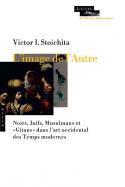L’image de l’Autre. Noirs, Juifs, musulmans et « Gitans » dans l’art occidental des Temps modernes
Victor Stoichita
In a time of crisis, the “Other” is often accused of all the ills. How can we define him though? This book which accompanied a cycle of conferences given at the Louvre in September and October 2014, shows how the major figures that act as a foil were created in Western art over the last centuries: those are the black man, the Jew, the Muslim or the Gypsy. The author (an expert in ‘otherness’ given he was born in Bucharest, educated in Rome and Paris, and teaches in Friburg) studied the way painters such as Bosch, Caravaggio or Rubens represented them, and he dissects the least detail. The physical traits, any distinctive signs and ways of representation are little by little codified by the painters. The Jew for example is characterised by his yellow clothes, the colour Judas wore in Giotto’s frescoes in the Scrovegni chapel in Padova ; and also by the mandatory yellow cloth circle, and if possible by a portrait in profile, to insist on the hooked nose, the receding forehead and the red hair. The same applies to the Muslim with his turban or the Gypsy with his gimmicked cards: the clichés that nourished racist propaganda go quite far back.
|  |
Review published in the newsletter #362 - from 30 October 2014 to 5 November 2014
